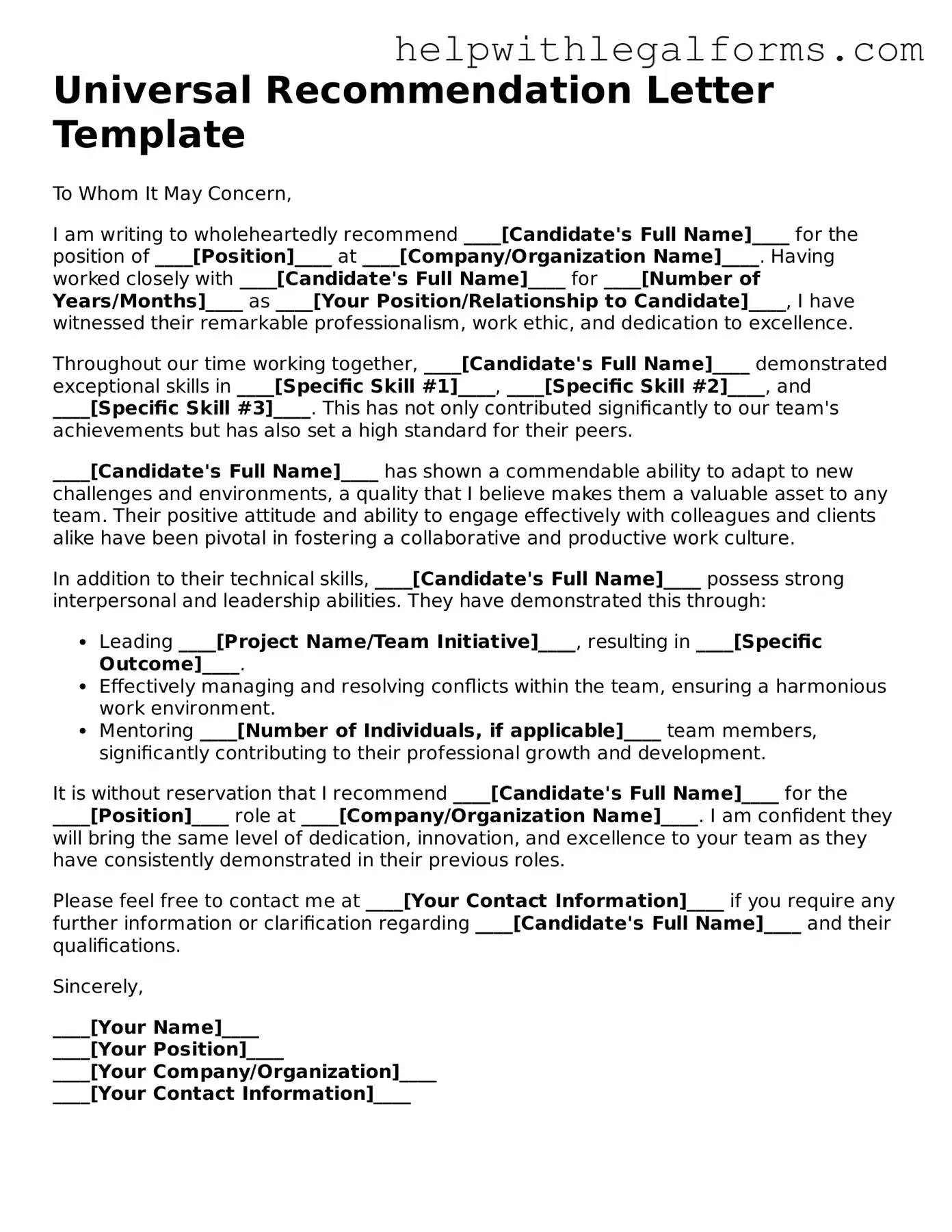What is a Recommendation Letter Form?
A Recommendation Letter Form is a document used to provide a formal evaluation of an individual's skills, achievements, and suitability for a specific position or opportunity. This form can be completed by a professional or academic reference who is familiar with the applicant's capabilities.
Who should complete a Recommendation Letter Form?
The form should be completed by someone who knows the applicant well and can provide specific examples of their qualifications and character. This could be a former employer, a teacher, a mentor, or a colleague.
What information is required in a Recommendation Letter Form?
Generally, the form will ask for details about the applicant’s relationship with the reference, the duration of that relationship, specific examples of the applicant's achievements or skills, and an overall evaluation of the applicant’s suitability for the opportunity in question.
How should I submit a completed Recommendation Letter Form?
Submission guidelines vary depending on the requesting organization. It may be submitted electronically via email or a submission portal, or it may need to be provided in a sealed, signed envelope. Always check the specific instructions provided.
Can a Recommendation Letter Form be edited after submission?
Once submitted, a Recommendation Letter Form typically cannot be edited. It's important to review the form thoroughly before submission. If a significant error is identified afterward, contact the requesting organization directly to inquire about possible solutions.
Is there a standard format or template for Recommendation Letter Forms?
While there's no one-size-fits-all template, many organizations provide specific forms or guidelines for submission. When in doubt, it's advisable to use a formal, professional tone and include specific, relevant examples of the applicant’s competencies.
How important is a Recommendation Letter Form in the application process?
Very important. It offers insight into the applicant's experience and abilities from a third-party perspective, providing a more comprehensive view of their suitability for the role or opportunity.
Can I use the same Recommendation Letter Form for multiple applications?
While it might be tempting, it's best to customize the recommendation for each application. Different opportunities might require highlighting various aspects of the applicant's skills and experiences. Use the form to address the specific requirements and interests of each opportunity.
